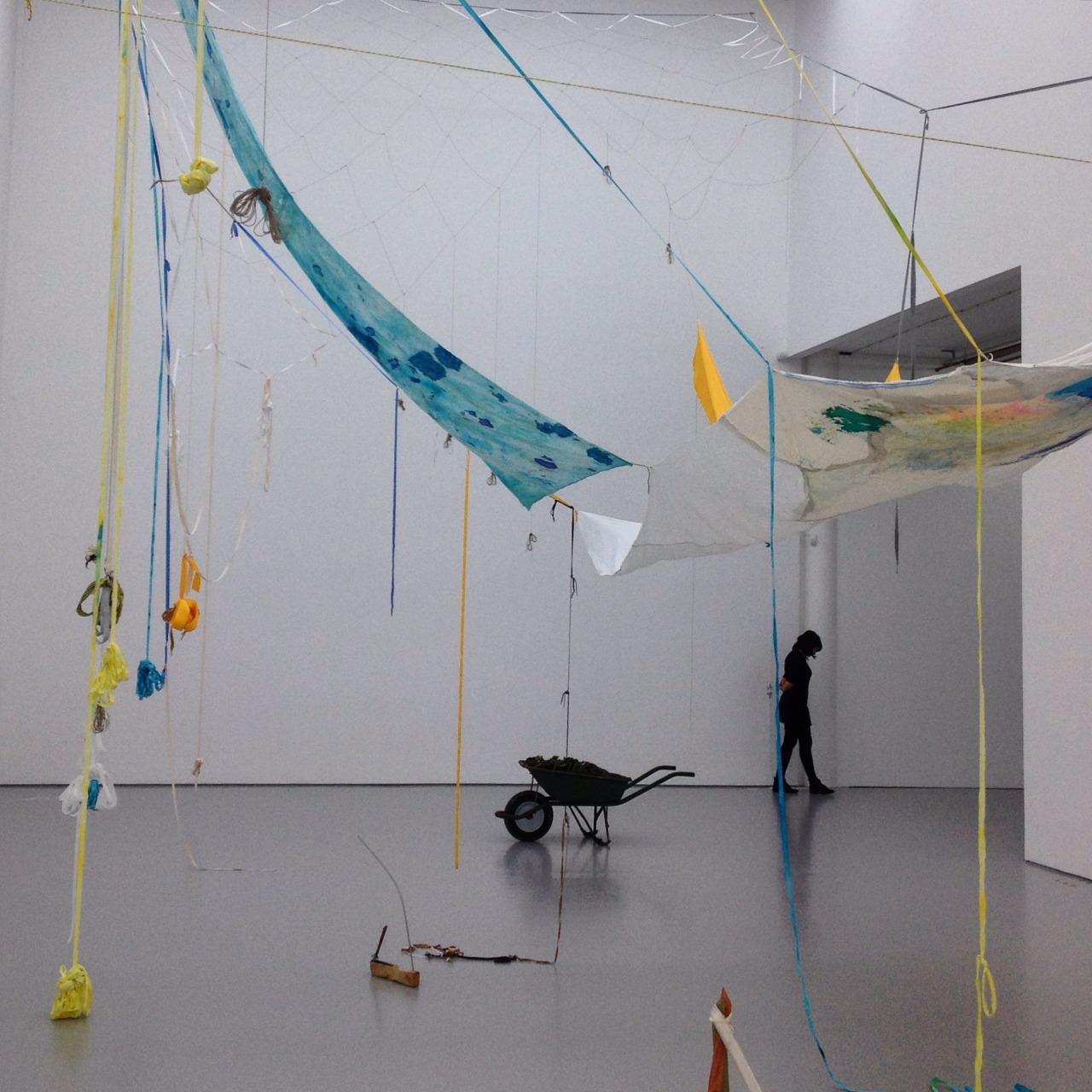Reto Pulfer: Gewässerzeiten
Spike Island Bristol 4 July to 20 September
‘We moderns … have no memories at all’, wrote Frances A Yates in her seminal text on the classical art of memory. Reto Pulfer, here, seems set on putting that right. His low-tech art turns its back on the sorts of high-tech (reliable but passive) aides memoires on which we have come to depend. In ‘Gewässerzeiten’, his first UK solo show, Pulfer prods and pokes at memory. By exploring various mnemonic techniques, some less systematic than others, he tests memory both through the content of his work and the method of its display. Sometimes memories clump together thematically, like Pulfer’s series of giant scrawly maps, executed from memory, of places he’s been or imagined (calling to mind Ignazio Danti’s fantastical painted maps in the Long gallery of the Vatican’s Belvedere Courtyard). At other times memories are unresolved and seemingly ad hoc, like MMMS Reticulum Gewässerzeiten, 2015. This single installation, consisting of eight individual works made between 2008 and 2015, sees an incomplete multi-coloured canopy of cloth, ribbon and laces knotted, partially strung up in a manner reminiscent of Eva Hesse, and overhanging smaller works on the floor.
These physical environments make literal the sorts of classical techniques for remembering that rely on connecting things to places. But there is also an enjoyable provisionality at play: I’m thinking of Pulfer’s makeshift tent secured with guy ropes, the camping tins, the assortment of brightly coloured stained, torn and drawn on objects. Memories are nomadic in the way they find homes for themselves, however impermanently.
The show is home to a series of three collections: Pulfer’s netted ensemble in the main room, his expanded corridor of maps and his back catalogue of smaller works. What keeps these collections interesting is the way he allows the distinctions between objects, memories and representations of memories to liquefy: old work is subsumed into new and vice versa. A series of performances, for example, marked the opening night. Pulfer hand-fired Raku pots and later tied them to ribbons and strings in the installation room, new work now assimilated into old. Though the performance was showy, the resulting pots are much more in keeping with the aesthetic of the rest of the show: they are modest, uneven but unassumingly lovely things. Keeping objects and actions on their toes like this, like vehicles for the performance of memory, Pulfer scribbles on, adjusts, suspends, adds to, tears down or replaces memories, casting, catching, arranging and rearranging them. Impermanence always abounds in MMMS Reticulum Gewässerzeiten. Rather than seeking to make sense of a past, Pulfer basks in the serendipity of what and how we remember and forget.
A smaller ‘back room’ is set out with tall tables, tilted at an angle, that run the length of two walls. It is a much more orderly affair. Filled with labelled curios in themed clusters, Methods and Games Tables is a more traditional display of bits and pieces that Pulfer has made, planned and kept over the years. These 44 artworks range from childhood cardboard swords, knots and experimental pots to games and mock-ups for exhibitions. Pulfer reckons that this room calls into question what should be considered art, who an artist and where the story of becoming an artist all begins. But this kind of overarching narrative, with its attempts to track the origins and development of a history, feels superimposed and unnecessarily justificatory. The charm of Pulfer’s hodgepodge of objects is enough; after all, ‘Remembrance of things past’, as the master of memory’s foibles, Marcel Proust, wrote, ‘is not necessarily remembrance of things as they were’.
Instead of stepping back and attempting to reflect objectively on his own creative output in chronological or thematic order in the manner of a retrospective, MMMS Reticulum Gewässerzeiten succeeds precisely because it sees Pulfer immerse himself in his creative past anew, casting a net into his history, as it were, and coming out with this: a constellation of objects (a bell, pots, tins, wooden implements and slight sculptures) amid a tactile canopy of netting and fabric – tied, sewn and hooked together – spanning a whole den-like room. With it, childhood haunts and hideouts come flooding back, along with the mental maps that shape and mark and make a past. Pulfer’s network of intermittently linked works is connected after the fact, its presentation echoing the piecemeal effect and intuitive means by which a practice unfolds over time.
Lizzie lloyd
This review was commissioned by Art Monthly and appeared in edition 389, September 2015
 salonkileijona liked this
salonkileijona liked this lizzielloyd posted this
